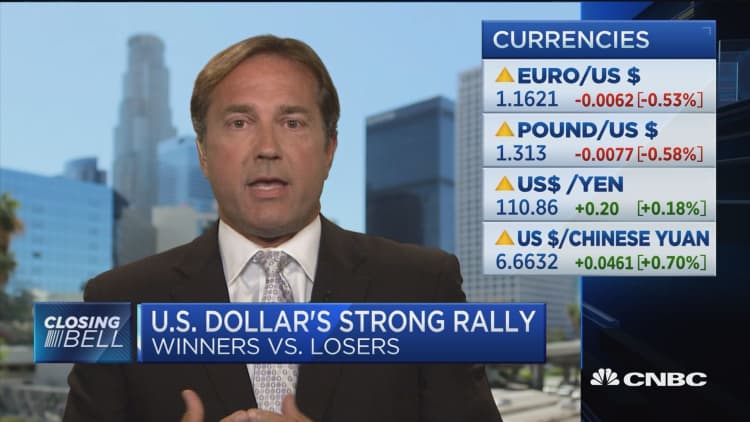The dollar fell on Tuesday as investors consolidated recent gains and focused less on trade tensions, raising the market's risk appetite and prompting some flows into other currencies such as the euro and .
Ahead of the U.S. Independence Day holiday, market sentiment also improved after the Chinese central bank moved to calm nervous foreign exchange markets following a fall in the renminbi below a key psychological level.
In a statement on the website of the People's Bank of China, Governor Yi Gang said the central bank was closely watching fluctuations in the foreign exchange market and would seek to keep the yuan at a stable and reasonable level. "That sentiment may have helped risk appetite a little...but the U.S. July 4th holiday and the July 6th start of U.S.-China trade tariffs are serving to keeping FX investors on the sidelines for now," Shaun Osborne, chief FX strategist at Scotiabank in Toronto, said.
In China, protracted weakness of its currency raises the prospects of capital outflows and a slowdown in the world's second-biggest economy, creating a new source of concern for currency markets grappling with rising threats to global trade.
The central bank's comments snapped a 10-day losing streak in the value of the renminbi which has seen it lose nearly 4 percent against a trade-weighted basket and nearly 4.5 percent against the dollar over that period.
The yuan fell to 6.6368 per dollar, its weakest since Aug. 7, 2017, before recovering to trade at 6.6466 per dollar.
In mid-morning trading, the dollar was down 0.45 percent against a basket of rival currencies at 94.60, after notching up three consecutive months of gains. Investors are awaiting the release of the Federal Reserve's June meeting minutes and jobs data for validation of policymakers' forecasts for two more rate hikes this year. The Fed will release minutes of its June meeting on Thursday and investors will parse the data and the statements to gauge whether it is still on track to raise interest rates twice more this year.
Monthly payrolls data follow on Friday. Valuations also remain supportive of the dollar, with its trade-weighted basket still below long-term averages. The euro, meanwhile, was supported after Germany's coalition settled a row over migration that had threatened to topple Chancellor Angela Merkel's government. The single currency was 0.16 percent higher at $1.1658. The Australian dollar, sensitive to developments in China because it is a key buyer of Australian commodity exports, extended gains and rose 0.56 percent on the day to US$0.738.



